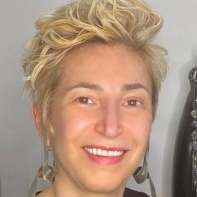Natural Products for Multi-Targeted Cancer Treatment: Where Are We Now?
A special issue of Toxins (ISSN 2072-6651).
Deadline for manuscript submissions: closed (31 December 2009) | Viewed by 58556
Special Issue Editor
Interests: anticancer pharmacology; natural products; in vitro studies; apoptosis; cell death; non-canonical cell death; genotoxicity
Special Issues, Collections and Topics in MDPI journals
Special Issue Information
Dear Colleagues,
Cancer is a biomedically complex group of diseases involving cell transformation, dysregulation of apoptosis, proliferation, invasion, angiogenesis and metastasis. Because of the enormous biological diversity of cancer, therapies that have been targeted to a single signaling molecule have shown limited promise. Rather, strategic combination of agents targeted against the most critical of those alterations will be needed. Another approach is the use of more unspecific agents that inhibit or modulate several relevant targets simultaneously. Accumulating evidence suggests that natural products interact with numerous latest targets. This supports the notion that they influence numerous biochemical and molecular cascades and could represent a more realistic approach to the actuality of carcinogenesis and the increasing problem of emerging resistance to monofunctional agents. A great deal of information is now available showing that several natural agents are endowed with potent anticancer activity. The affordability of natural products provides additional window of opportunities, such as their association with traditional anticancer drugs for overcoming cancer cell resistance to chemotherapy. In spite of all these advantages, several questions concerning the role of natural agents in the treatment of cancer remain unanswered. One of these questions is that of the optimal treatment dose needed to maximize positive and minimize the undesired adverse effects reported in cell culture and in vivo models. Some natural compounds have been shown to induce both dose-dependent pro-oxidative and anti-oxidative effects, genotoxicity and antigenotoxicity, apoptosis-inducing effects and necrosis. Further systematic study of natural compounds is needed to define the transferability of in vitro to in vivo and ultimately to human studies. Controlled intervention trials should be performed to prove their efficacy in humans.
Carmela Fimognari, Ph.D.
Guest Editor
Keywords
- natural agents
- anticancer chemotherapy
- chemotherapy resistance
- genotoxicity
- apoptosis
- necrosis
- cell culture studies
- in vivo studies
Related Special Issue
- Dietary and Non-Dietary Phytochemicals and Cancer in Toxins (11 articles)






